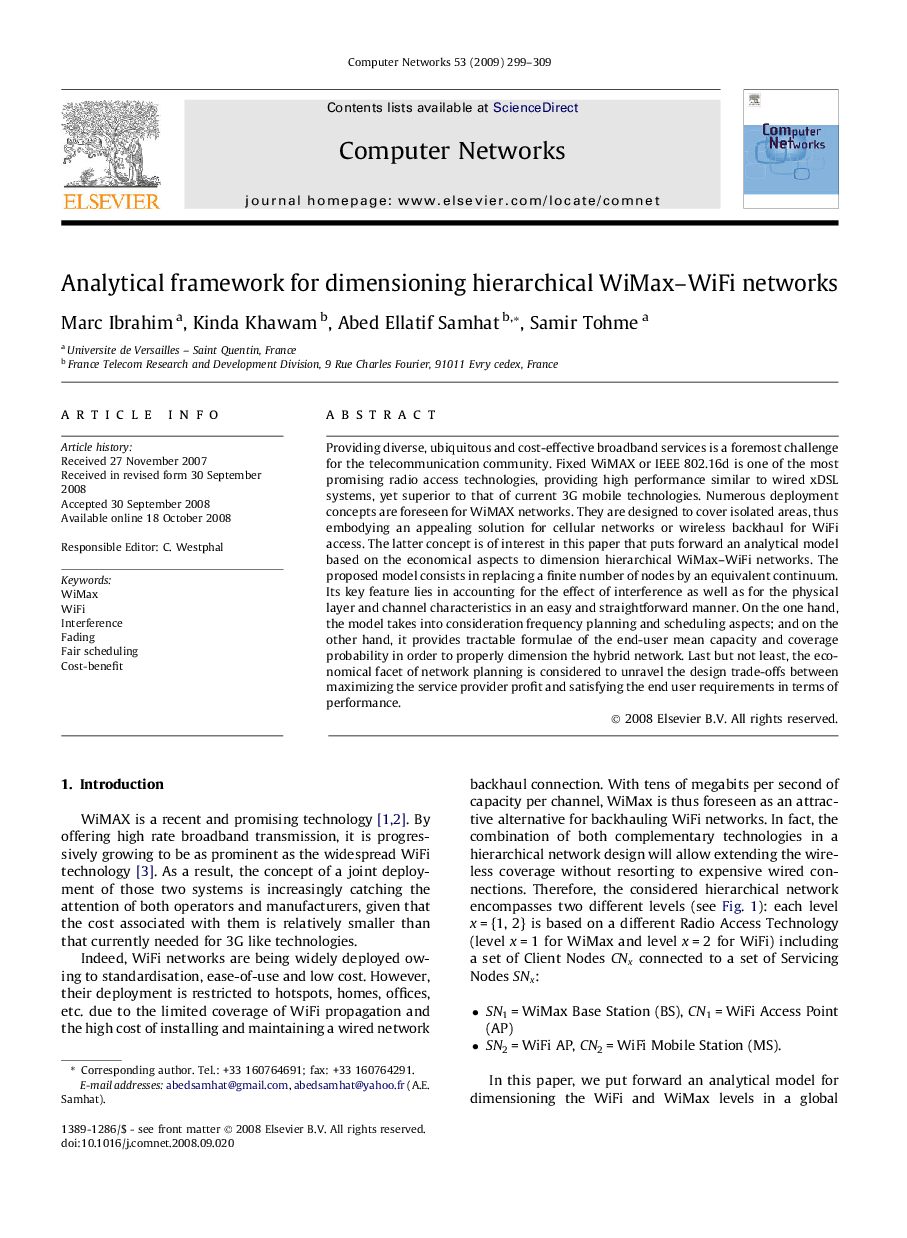| Article ID | Journal | Published Year | Pages | File Type |
|---|---|---|---|---|
| 452383 | Computer Networks | 2009 | 11 Pages |
Providing diverse, ubiquitous and cost-effective broadband services is a foremost challenge for the telecommunication community. Fixed WiMAX or IEEE 802.16d is one of the most promising radio access technologies, providing high performance similar to wired xDSL systems, yet superior to that of current 3G mobile technologies. Numerous deployment concepts are foreseen for WiMAX networks. They are designed to cover isolated areas, thus embodying an appealing solution for cellular networks or wireless backhaul for WiFi access. The latter concept is of interest in this paper that puts forward an analytical model based on the economical aspects to dimension hierarchical WiMax–WiFi networks. The proposed model consists in replacing a finite number of nodes by an equivalent continuum. Its key feature lies in accounting for the effect of interference as well as for the physical layer and channel characteristics in an easy and straightforward manner. On the one hand, the model takes into consideration frequency planning and scheduling aspects; and on the other hand, it provides tractable formulae of the end-user mean capacity and coverage probability in order to properly dimension the hybrid network. Last but not least, the economical facet of network planning is considered to unravel the design trade-offs between maximizing the service provider profit and satisfying the end user requirements in terms of performance.
